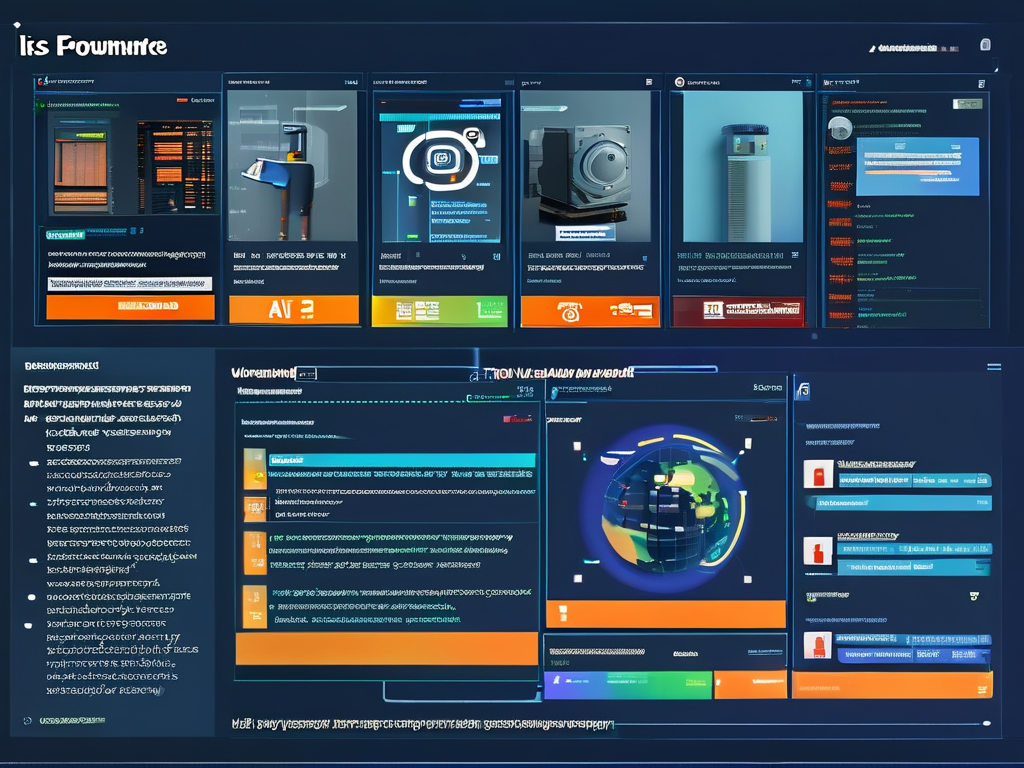In today’s fast-paced IT environments, automating the deployment and management of IIS (Internet Information Services) applications has become essential for maintaining operational efficiency. Manual processes are error-prone, time-consuming, and difficult to scale, especially in enterprise settings. By leveraging automation tools and scripts, teams can streamline workflows, reduce human intervention, and ensure consistent configurations across servers. This article explores practical strategies for automating IIS application deployment and ongoing maintenance while addressing common challenges.

Why Automate IIS Operations?
Automation in IIS management offers tangible benefits. First, it eliminates repetitive tasks such as creating application pools, configuring bindings, or deploying code updates. For example, manually deploying an application to multiple servers increases the risk of configuration drift. Automation ensures uniformity, whether deploying to a single server or a cluster. Second, it accelerates deployment cycles, enabling teams to meet agile development demands. Third, automated rollback mechanisms can mitigate downtime during failed deployments, enhancing system reliability.
Tools for IIS Automation
Several tools and frameworks support IIS automation:

- PowerShell: Microsoft’s scripting language is a cornerstone for IIS management. Modules like
WebAdministrationprovide cmdlets to manipulate IIS settings programmatically. - Microsoft Web Deploy: This tool simplifies syncing applications, configurations, and certificates across servers. It integrates with CI/CD pipelines for seamless deployments.
- Ansible and Chef: Infrastructure-as-code platforms enable declarative configuration management, ensuring IIS environments align with predefined states.
Below is a PowerShell snippet to create an IIS application pool and website:
Import-Module WebAdministration New-WebAppPool -Name "ExampleAppPool" New-Website -Name "ExampleSite" -Port 80 -PhysicalPath "C:\inetpub\ExampleSite" -ApplicationPool "ExampleAppPool"
Implementing Automated Deployment Pipelines
A robust deployment pipeline for IIS applications typically includes these stages:
- Code Integration: Use Git or Azure Repos to manage version control.
- Build Automation: Compile code and package artifacts using tools like MSBuild or Azure Pipelines.
- Testing: Run unit and integration tests in isolated environments.
- Deployment: Execute scripts or use tools like Web Deploy to push updates to target servers.
- Validation: Verify functionality post-deployment through health checks or monitoring tools.
For instance, integrating Web Deploy with a CI/CD platform allows teams to automate deployments using a command like:
msdeploy.exe -verb:sync -source:package="ExampleApp.zip" -dest:auto,computerName="TargetServer"
Addressing Security and Compliance
Automation must align with security best practices. Use credential management tools like Azure Key Vault to handle secrets (e.g., database passwords, API keys) instead of hardcoding them in scripts. Role-based access control (RBAC) ensures only authorized personnel execute deployment tasks. Additionally, audit logs from tools like PowerShell or Ansible Tower provide visibility into changes, aiding compliance efforts.
Handling Common Pitfalls
While automation reduces errors, misconfigurations can still occur. For example, incorrect permissions on deployment folders may cause failures. To troubleshoot, enable detailed logging in PowerShell scripts using -Verbose or -Debug flags. Regularly test deployment scripts in staging environments to catch issues early.
Case Study: Streamlining a Multi-Server Deployment
A financial services company reduced deployment times by 70% after automating their IIS workflow. Previously, deploying updates across 50 servers took eight hours manually. By adopting PowerShell scripts and Web Deploy, the team achieved zero-downtime deployments in under two hours. They also implemented automated health checks to validate each deployment, reducing post-release incidents by 40%.
Future Trends
Emerging technologies like Kubernetes and Docker are reshaping IIS automation. While IIS traditionally hosts .NET Framework apps, containerization enables hybrid environments where legacy apps coexist with modern microservices. Tools like Azure Arc extend automation capabilities to on-premises and multi-cloud IIS deployments, offering centralized management.
Automating IIS application deployment and management is no longer optional for organizations aiming to optimize IT operations. By combining PowerShell, CI/CD pipelines, and infrastructure-as-code tools, teams can achieve faster, more reliable deployments while minimizing manual effort. Start small—automate a single deployment task—and gradually expand to full pipelines. As technologies evolve, staying updated with automation trends will ensure long-term scalability and resilience.









